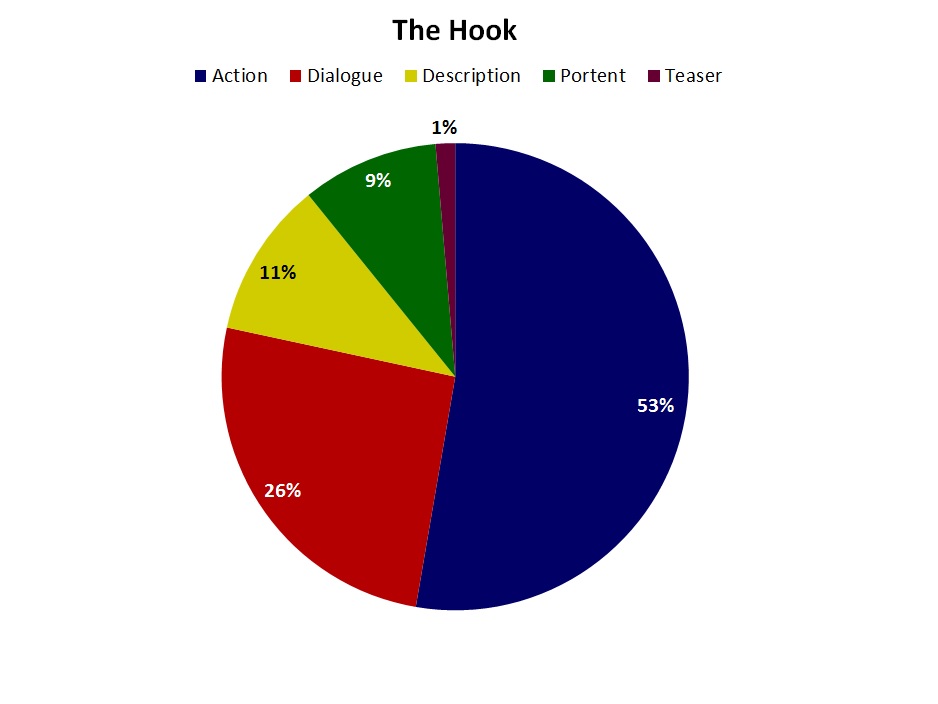Numbers in Writing: The Hook
Blogger’s Note: Due to construction workers accidentally cutting my phone line on Monday, I was out of Internet access and phone access until tonight. I’ll post Tuesday’s post tonight and will post my on-the-edge living blog tomorrow so that I’ll be back on my regular schedule.
 The hook. Its name defines it. According to Plot and Structure by James Scott Bell, the hook is what pulls a reader into a scene and keeps them turning pages to the end of the scene. It’s got to be spot on, interesting. And varied throughout the book. According to Bell, five hooks exist, those of action, dialogue, description, teaser, and portent. For an in depth discussion of these types, check out his book.
The hook. Its name defines it. According to Plot and Structure by James Scott Bell, the hook is what pulls a reader into a scene and keeps them turning pages to the end of the scene. It’s got to be spot on, interesting. And varied throughout the book. According to Bell, five hooks exist, those of action, dialogue, description, teaser, and portent. For an in depth discussion of these types, check out his book.
Varying the types of hooks makes a novel more interesting to read. It will also pull a reader right into a scene. Think of the five types of hooks as ingredients. The most common are action and dialogue. The author may use description, portent, and teasers, but they function more like spices, something that make a novel more interesting but shouldn’t be overly used. The distribution should be similar to that shown on the pie chart. Like with point of view, knowing how to balance the different hook types will improve your novel.
How do numbers play a role in determining that balance?
- They show where a novel may be improperly balanced in terms of usage. A novel with too much description, portent, and teaser as hooks may seem to move slugglishly or may come across as melodramatic. A novel with too many action and dialogue hooks may bore the reader. Knowing what percentage of scenes start with which type of hook may help you see where changes are needed to more properly balance your novel by decreasing the spice hooks slightly.
- They show the level of usage for each type of hook. While your novel may have an appropriate proportion level of spicy hooks, maybe you have too much action and not enough dialogue. This may also frustrate the reader. By comparing the percentage of dialogue to action hooks, you can tell if you need to more evenly balance them. The pie chart shows that action hooks make up approximately half of the hooks used. Since this novel contains a lot of action, the proportion may be appropriate. For a romance, this percentage might not be. It’s up to you, the writer, to determine what works.
Take the following steps to develop a hook pie chart:
- On your spreadsheet that lists scene numbers, chapter names/summaries, and point of view, add a column for hooks. Let me know if you need a way to define these hooks so that they’re consistent, which is a must.
- Calculate the percentage of each type of hook.
- Create a pie chart showing the distribution.
- Examine the pie chart. Do you have too many hooks that should be spice? Are you heavy on one type of hook and not another? What works best for your novel?
- Review and revise your manuscript. Use the information from the graphs to balance out your hooks.
Remember that each novel is unique. Using percentages to take a look at your hooks and listening to your instinct will aid in your manuscript revision. I promise you won’t be disappointed.
I have not received any compensation for writing this post. I have no material connection to the brands, products, or services I have mentioned. I am disclosing this in accordance with the Federal Trade Commission’s 16 CFR Part 255: Guides Concerning the Use of Endorsements and Testimonials in Advertising.”




No Comments